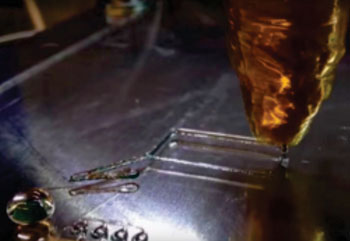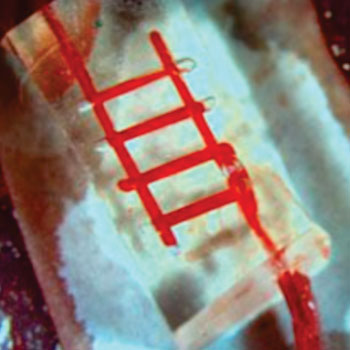Microtubule Network Created by Three-dimensional Printing Transports Blood in an Animal Model
By LabMedica International staff writers
Posted on 18 Nov 2015
A novel three-dimensional printing technique was used to create networks of microtubules that could be surgically attached to supply oxygen and nutrients to replacement tissues and organs growing in vitro and to transplanted organs growing in vivo. Posted on 18 Nov 2015
A major problem hindering the engineering of large artificial tissues, such as livers or kidneys, is providing internal cells with nutrients. Implanting engineered tissue scaffolds inside the body to encourage blood vessels from nearby tissues to spread to the implanted tissue usually takes too long, and cells deep inside the new organ often starve or die from lack of oxygen before they can be reached by the slow-growing blood vessels.
To avoid this problem, investigators at Rice University (Houston, TX, USA) and surgeons at the University of Pennsylvania (Philadelphia, USA) teamed up do develop a new way to channel nutrients to growing masses of tissue. They created artificial blood vessels by using an open-source three-dimensional printer that deposited individual filaments of sugar glass one layer at a time to print a lattice of microtubules. Once the sugar hardened, it was placed in a mold that was filled with silicone gel. After the gel cured, the sugar was dissolved leaving behind a network of small channels in the silicone.
In a proof-of-principle experiment that was described in the September 28, 2015, online edition of the journal Tissue Engineering Part C: Methods, surgeons connected the inlet and outlet of the engineered microtubule network to a major artery in a small animal model. Using Doppler imaging technology, they observed and measured blood flow through the construct and found that it withstood physiologic pressures and remained open and unobstructed for up to three hours.
"They do not yet look like the blood vessels found in organs, but they have some of the key features relevant for a transplant surgeon," said contributing author Dr. Jordan Miller, assistant professor of bioengineering at Rice University. "We created a construct that has one inlet and one outlet, which are about one millimeter in diameter, and these main vessels branch into multiple smaller vessels, which are about 600 to 800 microns."
"This study provides a first step toward developing a transplant model for tissue engineering where the surgeon can directly connect arteries to an engineered tissue," said Dr. Miller. "In the future we aim to utilize a biodegradable material that also contains live cells next to these perfusable vessels for direct transplantation and monitoring long term."
Related Links:
Rice University
University of Pennsylvania






 assay.jpg)









